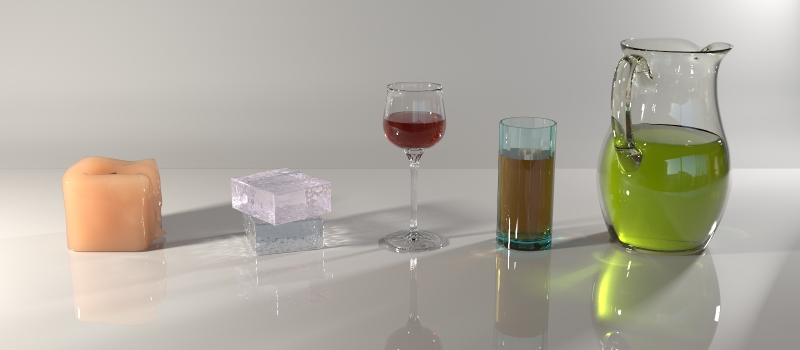 |
Jaroslav Křivánek |
Unifying points, beams, and paths in volumetric light transport simulation
|
Jaroslav Křivánek
Charles University in Prague |
Iliyan Georgiev
Light Transportation, Ltd. |
Toshiya Hachisuka
Aarhus University |
Petr Vévoda
Charles University in Prague |
|
Martin Šik
Charles University in Prague |
Derek Nowrouzezahrai
Université de Montréal |
Wojciech Jarosz
Disney Research Zurich |
 |
We present a new rendering algorithm for light transport simulation in participating media that combines a number of volumetric radiance estimators based on point and beam density estimation with unbiased path sampling techniques. The algorithm excels at rendering scenes with different kinds of media, where previous specialized techniques each fail in complementary ways.
Abstract
Efficiently computing light transport in participating media in a manner that is robust to variations in media density, scattering albedo, and anisotropy is a difficult and important problem in realistic image synthesis. While many specialized rendering techniques can efficiently resolve subsets of transport in specific media, no single approach can robustly handle all types of effects. To address this problem we unify volumetric density estimation, using point and beam estimators, and Monte Carlo solutions to the path integral formulation of the rendering and radiative transport equations. We extend multiple importance sampling to correctly handle combinations of these fundamentally different classes of estimators. This, in turn, allows us to develop a single rendering algorithm that correctly combines the benefits and mediates the limitations of these powerful volume rendering techniques.
Publication
Jaroslav Křivánek, Iliyan Georgiev, Toshiya Hachisuka, Petr Vévoda, Martin Šik, Derek Nowrouzezahrai, and Wojciech Jarosz. Unifying points, beams, and paths in volumetric light transport simulation. ACM Trans. Graph. 33(4), 2014. (SIGGRAPH 2014) ... DOI | BibTeX
Links and Downloads
| paper |
supplemental document |
code (SmallUPBP) |
slide notes |
slides |
EGSR 2014 poster |
fxgide article |
 |
 |
 |
 |
 |
 |
 |
| pdf (26 MB) | pdf (.3 MB) | external link |
pdf (4 MB) | pptx (21 MB) | pdf (56 MB) | external link |
Image Comparisons
| Still Life | Mirror Balls | Bathroom |
 |
 |
 |
| html | html | html |
Acknowledgments
This work was supported by the Czech Science Foundation (grant P202-13-26189S) and Charles University in Prague (projects GA UK 1362413 and SVV-2014-260103). Derek Nowrouzezahrai acknowledges funding from the Natural Sciences and Engineering Research Council of Canada. Chaos Group kindly provided the Bathroom scene. Ondřej Karlík helped modeling the Still Life scene. We thank the reviewers for their suggestions on improving the paper